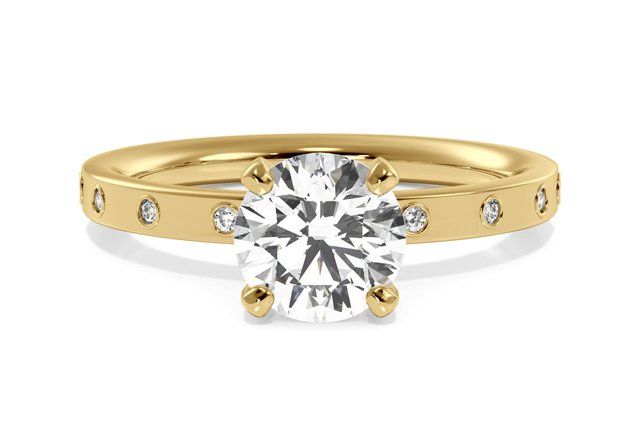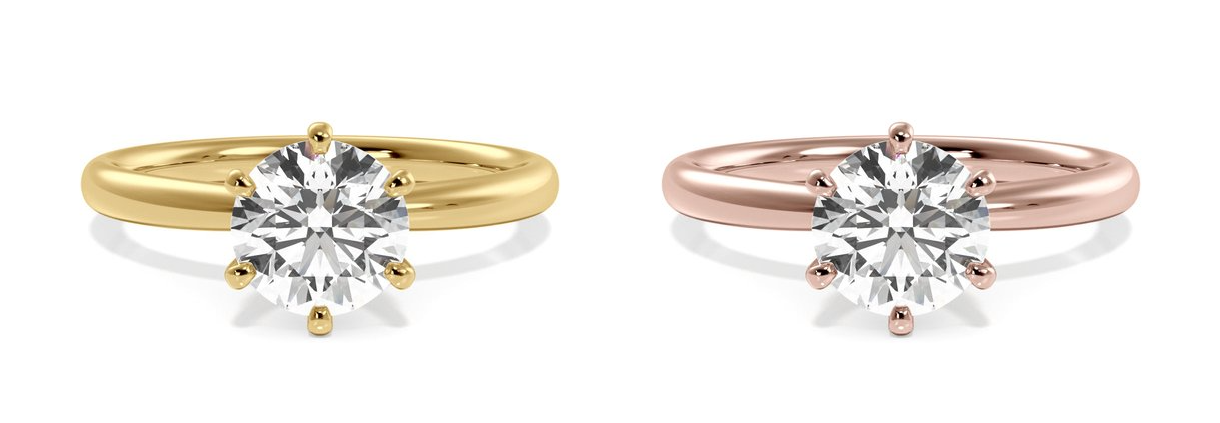G Color Diamonds: The Ultimate Buying Guide
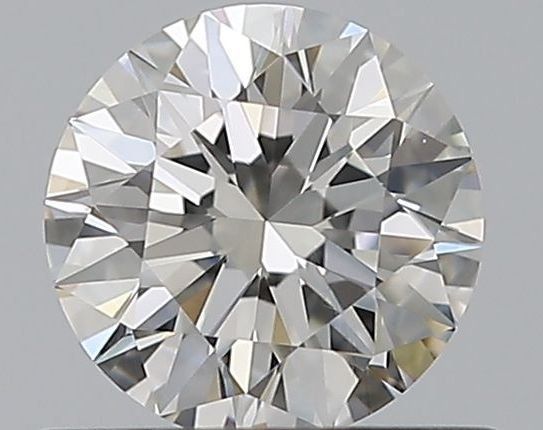
Diamonds that receive a G color grade are a popular choice for engagement rings and other diamond jewelry pieces. Keep reading to learn more about this diamond color.
Understanding Diamond Color
The 4Cs of Diamonds
Introduced by the Gemological Institute of America (GIA) in the late 1940s, the 4Cs of Diamonds are now the global standard. Each letter ‘C’ represents a quality trait that receives a grade or identifier. The 4Cs are Carats, Cut, Clarity, and Color.
No single feature is more important than the others. A diamond’s value is determined by analyzing each aspect. Carats might have the highest impact on price, but two diamonds of the same Cut and Carat weight might have drastically different price points depending on their Clarity and Color grades.
Diamond Color Grades

Only a tiny fraction of diamonds are completely colorless. That is, in fact, the first group in the Diamond Color Scale. Colorless diamonds are those with grades D, E, and F, with D being the only grade that is fully transparent.
Most diamonds have a yellow undertone. And this saturation—or lack thereof—gets measured and graded on a D-Z scale. Going from no color presence at all, all the way to Light Yellow. Ritani only offers diamonds in the D through L range.
G Color Grades And The Near-Colorless Group
After the Colorless group comes the Near-Colorless category. This class includes color grades G, H, I, and J. Near-Colorless diamonds still appear transparent to the naked eye. Only a slight yellow tint can be observed under magnification and with laboratory equipment.
There is typically a significant price drop when moving from one color grade to the next. And this is even more noticeable when transitioning between groups. Colorless graded diamonds command premium prices. So, as the first and highest grade of the Near-Colorless category, G color diamonds present attractive advantages.
3 Reasons To Buy A G Color Grade Diamond
1. They Are The Highest Near-Colorless Grade
Which means they are closer to the Colorless class. It is virtually impossible for the untrained eye to recognize a G diamond by its grade. Truth is, G color diamonds look pretty white, especially when set in platinum or white gold.
Read Our Platinum Engagement Ring Buying Guide
2. You Won't Be Able to Tell Them Apart from a Colorless Diamond
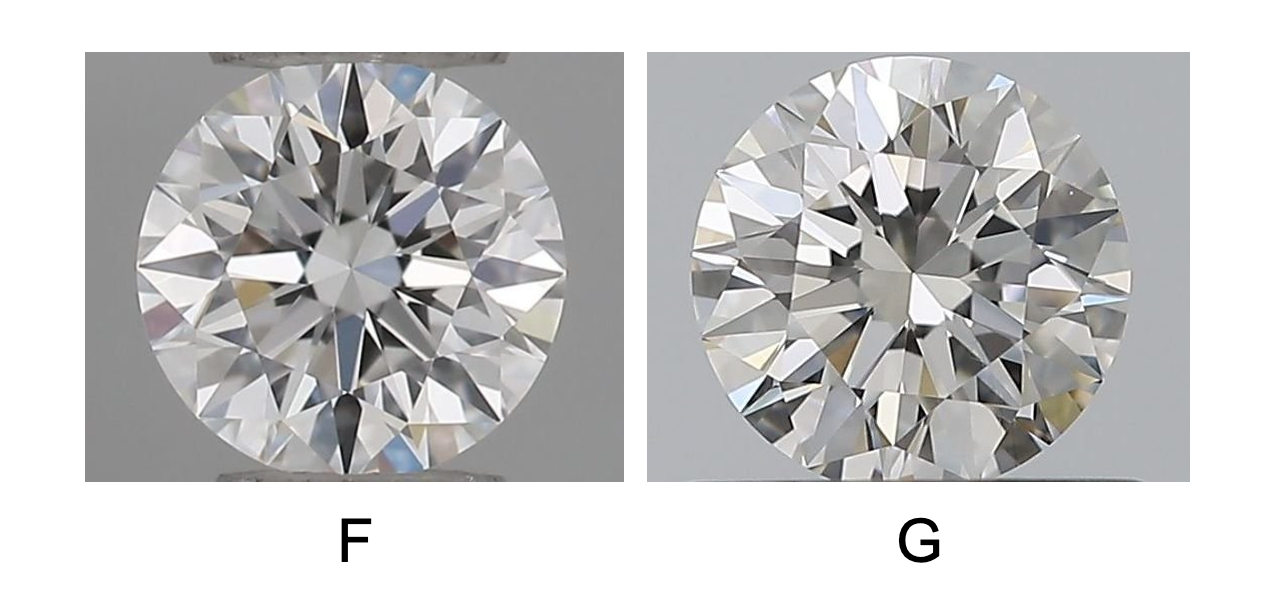
G color diamonds have a slightly more yellow tint than F grades. This difference is, however, imperceptible without specialized gemological equipment. You won't be able to see the difference with the naked eye.
3. G Color Diamonds Are Cheaper Than D-E-F Grades
You can expect lower prices by going one group down from Colorless to Near-Colorless. If you’re looking to make the most out of your budget, you can go for a G color grade and use the premium you’ve paid for a Colorless to improve on Clarity. A higher clarity grade will display your G color better.
G vs. F And Other Color Grades
When looking at every grade in the Colorless and Near-Colorless group (D-E-F-G-H-I-J), the G grade sits right in the middle. This is a very advantageous position. Comparing color and prices, G offers an excellent value for its perceived transparency.
Unless you go to a jeweler with special equipment or the right magnification tools, there’s no way to tell apart a G and an F-grade diamond.
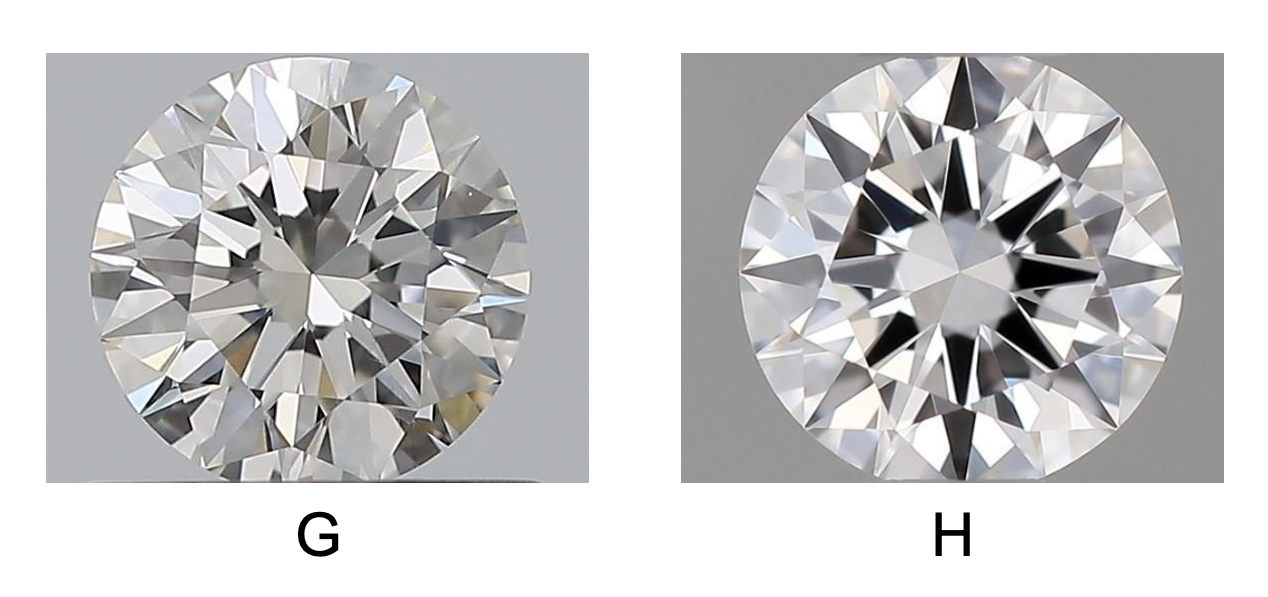
H color diamonds bear a lower price tag than G grades. There’s no absolute consensus, but some people can already spot faint yellow nuances in H color diamonds. So, a G grade is your safest bet if you want a stone that looks as white as possible outside of the Colorless class.
Clarity In G Color Diamonds
For Near-Colorless diamonds, Clarity is key. Fewer inclusions mean it’s easier to look through the stone. A high Clarity would make a G color diamond’s almost transparent appearance more noticeable. Better Clarity also translates into more brilliance, and a sparkling G color stone will look stunning. Look for diamonds with a minimum clarity grade of VS2 to ensure eye cleanliness.
G Color Diamond Engagement Rings
Look for these characteristics when shopping for G Color engagement rings:
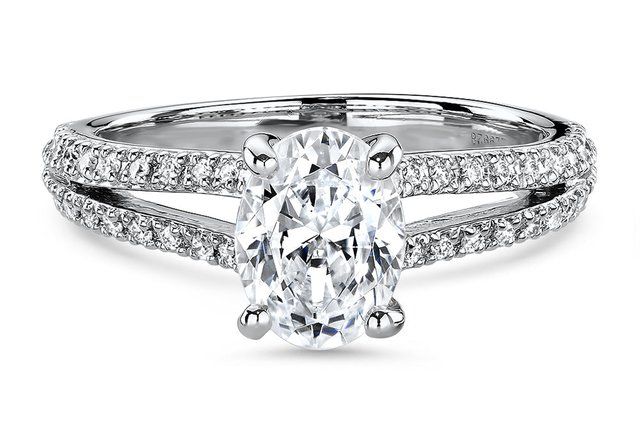
- Choose a white metal such as platinum or white gold to enhance the stone’s color.
- Choose the best cut grade for a beautiful, sparkling stone - look for Ideal cut diamonds if you are looking for a round-cut diamond engagement ring, and a Very Good cut for engagement rings with fancy shapes, like the oval-cut.
- Step Cuts such as the Emerald cut and Asscher have less demand than Brilliant Cuts like the Round-cut. This translates into lower prices, allowing you to save money or invest it in a higher Carat weight.
Discover More Diamond Shapes
Near-Colorless G Diamonds: Earth or Lab Grown?
Learn the pros and cons of buying an Earth-Grown vs. a Lab-Grown Near-Colorless G diamond.
Earth-Grown G Color Diamonds
Many people still prefer and feel safer when buying a mined diamond. They are the classic choice, and the idea of a pure mineral that took hundreds of millions to form in the ground still has a romantic appeal.
The main advantage Earth-Grown diamonds have to offer is they hold a better resale value than their manmade counterparts. This is mainly because dealers, jewelers, and other institutions still favor Earth-Grown diamonds and prefer to trade them. So, if you ever want to sell your G diamond jewelry, Earth-Grown is the better option.
At Ritani, we go above and beyond that to make sure that all our diamonds are ethically sourced and come from companies that treat their workers fairly. We carefully select our suppliers and ensure that the diamond you get was mined ethically and conflict-free.
Explore Our Incredible Inventory Of Earth-Grown G Color Diamonds
Lab-Grown G Color Diamonds
Chemically, optically, and physically identical to Earth-Grown, Lab-Grown diamonds are a modern, low-cost alternative. You can get the sparkles and the luxurious feel of wearing diamond jewelry while on a budget.
The only difference between Lab-Grown and Earth-Grown is their origin. At Ritani, all of our Lab-Grown diamonds include a laboratory report.
If you have questions and need assistance selecting a Lab-Grown or Earth-Grown diamond, contact us and chat with one of our gemologists.
Find The Perfect G Color, Lab-Grown Diamond For You
G Color Diamonds FAQs
Are G Color Diamonds A Good Option?
Yes, G-grade diamonds offer an attractive price point considering they practically look the same as an F colorless.
Do G Color Diamonds Look Yellow?
No, G-grade diamonds are part of the Near-Colorless group. Most people will probably start noticing yellow hints from K grades on.
How Much Is a G Color Diamond?
There is no single answer as there isn’t an average price for a G-color diamond. It really depends on how desirable are the stone’s other characteristics. Higher Clarity, better Cuts, and, of course, a higher Carat weight will make a diamond more expensive.
For reference, an Earth-Grown 1-carat Round Cut diamond with G color and VS1 grades, currently retails in the range of $4,000-$6,000 USD.
How To Buy A Near-Colorless G Diamond
At Ritani, we’ve developed fantastic tools to help you filter and find the best G color diamond for your expectations and possibilities.
- Refine your search by selecting your favorite diamond Cuts, desired Clarity, Color, and Carat weight. You can even select your preferred price range.
- Use our Comparison Tool to get a better look at the differences and similarities between two or more diamonds.
- Pay attention to the Best Value recommendations to discover stones with exceptional characteristics for their price.
- Have fun with our Ring Customizer and select your desired setting and center diamond combination.

